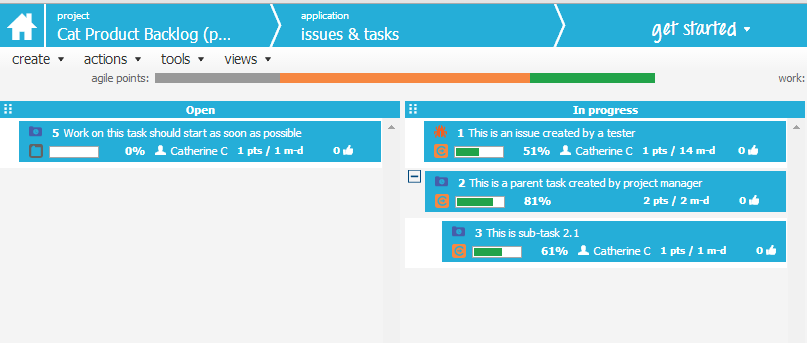Kanban vs scrum: The basics of Kanban
Before we can examine kanban vs scrum, we need to understand the origins and basic principles that govern each methodology individually. Part 1 of the kanban vs scrum series will focus on Kanban.
The Kanban Way
More specifically, the Kanban method allows teams to see what and when tasks need be tackled. Thus, being able to visualize your product work flows within your team’s process allows you to effectively communicate the status of your tasks, and provide a clear context for your overall development. Here’s an example of how OneDesk lets you visually manage a team’s workflows within a process:

For instance from this image we can see that I currently only have one task open (hooray!) and three tasks in progress. I was able to quickly get this information by simply looking at my visual board.
Advantages of Kanban
Product managers using Kanban report many business benefits including:
- Holding team members more accountable for their work
- Improve workflows and the overall production process
- Increased understanding and responsiveness to customer demand
- Strengthened collaboration
- Improved teamwork and overall team member morale
Next week, we will continue our kanban vs scrum blog series with a closer look at scrum systems and how they can help your teams work more productively. In the meantime, we would love to hear your thoughts on kanban vs scrum: Which methods do you and your team prefer? Share your thoughts with our readers below!
Check out what else we have to say about agile methodologies:
Agile strategies and alternatives
Agile Technologies and Their Characteristics
Agile approach: Practicing it with OneDesk
Agile Adoption Statistics 2012
Scrum Methodology vs. Agile Methodology
SDLC Methodologies: Agile or Waterfall?